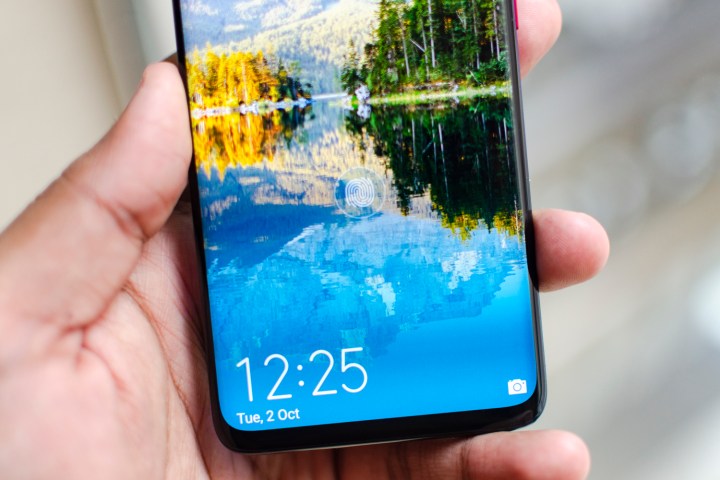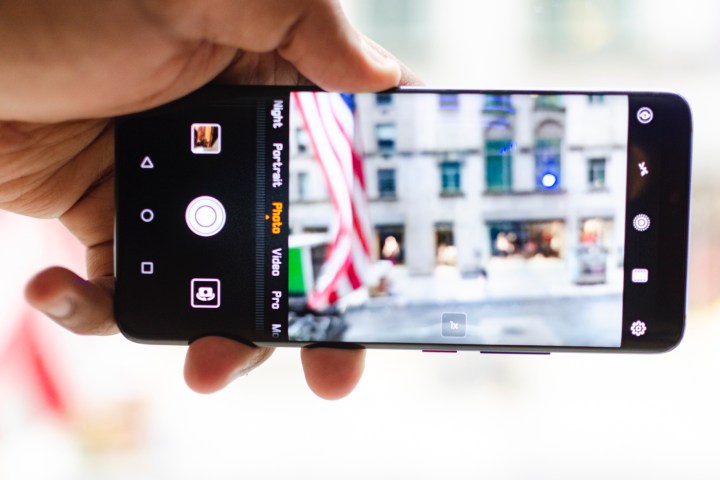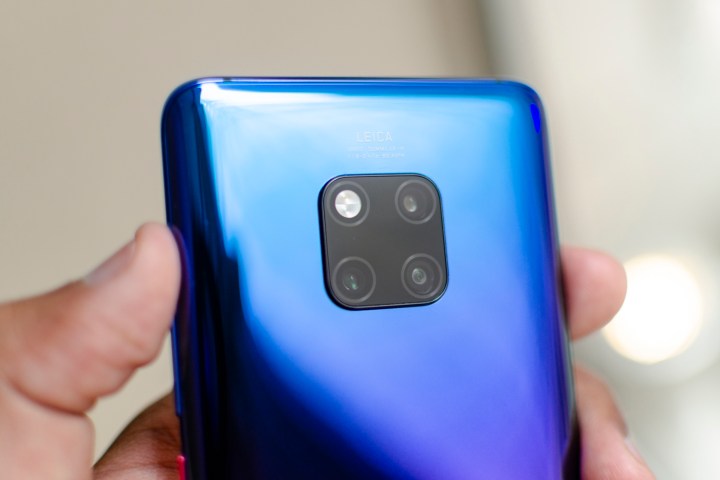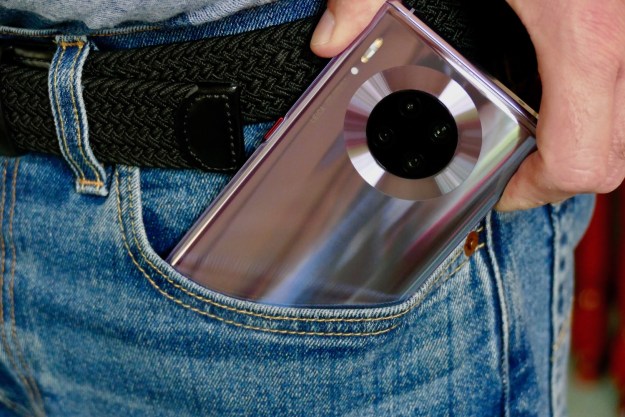It doesn’t seem that long ago that the Huawei P20 Pro burst onto the scene with its stunning twilight finish, upping the ante for smartphone cameras everywhere with a triple lens setup. Yet here we are barely six months later with a new Huawei flagship sailing into view. The Huawei Mate 20 Pro is certainly bigger, but is it better than its predecessor?
At first glance, these phones share a lot of similarities, but we’re about to dig a bit deeper to uncover all the differences and help you choose between them.
Specs
| Huawei Mate 20 Pro | Huawei P20 Pro | |
| Size | 157.8 x 72.3 x 8.6 mm (6.22 x 2.85 x 0.34 inches) | 155 x 73.9 x 7.8 mm (6.1 x 2.9 x 0.3 inches) |
| Weight | 189 grams (6.66 ounces) | 174 grams (6.14 ounces) |
| Screen size | 6.4-inch AMOLED display | 6.1-inch AMOLED display |
| Screen resolution | 3,120 x 1,440 (538 pixels-per-inch) | 2,240 x 1,080 pixels (408 pixels-per-inch) |
| Operating system | Android 9.0 Pie | Android 8.1 Oreo |
| Storage space | 128GB, 256GB | 128GB, 256GB |
| MicroSD card slot | No – features proprietary Nano Memory Card | No |
| Tap to pay services | Google Pay | Google Pay |
| Processor | Kirin 980 | Kirin 970 |
| RAM | 6GB, 8GB | 6GB, 8GB |
| Camera | Triple sensor 40MP and 20MP and 8MP rear, 24MP front | Triple-lens 40MP, 20MP, and 8MP rear, 24MP front |
| Video | 2,160p at 30 frames per second, 1,080p at 60 fps, 720p at 960 fps | 2160p at 30 frames per second, 1080p at 30 fps, 720p at 960 fps |
| Bluetooth version | Bluetooth 5.0 | Bluetooth 4.2 |
| Ports | USB-C | USB-C |
| Fingerprint sensor | Yes (In-display) | Yes (front) |
| Water resistance | IP68 | IP67 |
| Battery | 4,200mAh
Fast charging Qi wireless charging |
4,000mAh
Fast charging |
| App marketplace | Google Play Store | Google Play Store |
| Network support | T-Mobile, AT&T | T-Mobile, AT&T |
| Colors | Emerald green, midnight blue, twilight, pink gold, black | Black, blue, pink gold, twilight |
| Price | 1,049 Euros (around $1,220) | $1,000 |
| Buy from | Huawei | Huawei |
| Review score | 4.5 out of 5 stars | 4.5 out of 5 stars |
Performance, battery life, and charging

The newer Huawei Mate 20 Pro has Huawei’s latest Kirin 980 processor inside. Huawei claims that it’s 20 percent faster and 40 percent more efficient than the Kirin 970 which graces the P20 Pro. Both phones are available with 128GB of storage and 6GB of RAM or 256GB of storage and 8GB of RAM. Only the Mate 20 Pro allows for storage expansion via a card, but it won’t take any Micro SD card, you will have to spring for one of Huawei’s proprietary NM Cards.
Not only does the Mate 20 Pro have a bigger battery, it also supports much faster charging at up to 40W, giving you 70 percent battery life in just 30 minutes, compared to just over 50 percent for the P20 Pro. Just to seal the deal, the Mate 20 Pro also supports Qi wireless charging which the P20 Pro lacks.
Winner: Huawei Mate 20 Pro
Design and durability
- 2. Huawei P20 Pro
Both of these phones have notches at the top of the displays, but the P20 Pro’s is smaller. They also both have bezels at the bottom, though the P20 Pro is starting to show its age with that lozenge-shaped fingerprint sensor, while the Mate 20 Pro has an in-display fingerprint sensor. The sides of the Mate 20 Pro are also more curved. On the back, you will find Huawei’s gorgeous paint job — we especially love the twilight finish — but the P20 Pro’s triple lens camera module definitely looks better than the big square module on the back of the Mate 20 Pro.
Something Huawei has improved is the water resistance, with the Mate 20 Pro scoring an IP68 rating compared to the P20 Pro’s IP67 rating. Both can handle a short dunk without damage, but the Mate 20 Pro can handle slightly deeper water. Neither is going to handle falls well, so you’ll want to look at some good cases.
We’re going to give the Mate 20 Pro the nod here, but we do think the P20 Pro looks better from the back.
Winner: Huawei Mate 20 Pro
Display

You’ll find top-quality AMOLED screens in both of these phones. The P20 Pro has a 6.1-inch display with a 2,240 x 1,080-pixel resolution which translates to 408 pixels-per-inch (ppi). The Mate 20 Pro has a slightly bigger 6.4-inch display with a 3,120 x 1,440-pixel resolution for a pixel density of 538 ppi. The taller display in the Mate 20 Pro isn’t just bigger, it’s also sharper and so it wins this round.
Winner: Huawei Mate 20 Pro
Camera

Huawei has stuck with a triple lens setup on the Mate 20 Pro, just like the P20 Pro, but there are some differences. The Mate 20 Pro has a main lens rated at 40 megapixels with an f/1.8 aperture, with an ultra wide-angle lens with 20 megapixels and an f/2.2 aperture, and a telephoto 8-megapixel lens with an f/2.4 aperture. On paper, the P20 Pro set up looks familiar with 40-megapixel, 20-megapixel, and 8-megapixel lenses, but the monochrome lens we loved so much in the P20 Pro is gone. Huawei has essentially swapped the monochrome lens for a super wide-angle lens and the Mate 20 Pro camera is likely to be more versatile as a result.
Both phones have a 24-megapixel front-facing camera for stunning selfies, but only the Mate 20 Pro offers proper facial scanning and 3D Live Emoji.
Winner: Huawei Mate 20 Pro
Software and updates

While the P20 Pro launched with Android 8.1 Oreo, Huawei has started to roll out the Android 9.0 Pie update. The Huawei Mate 20 Pro launches with Android 9.0 Pie on board. Both feature Huawei’s EMUI on top which adds various customization options and extra features. The software experience on these phones is going to be identical and we expect them to continue to get updates for a similar period of time, so there’s no dividing them here.
Winner: Tie
Special features

Although most of the special artificial intelligence features are available on both phones, powered by the dedicated neural processing unit, the newer Mate 20 Pro chip should prove faster and more capable. The Mate 20 Pro also supports much faster charging and a special reverse wireless charging ability that enables it to act as a wireless charger for another phone, though we’re not sure you will want to donate your extra battery life very often. Factor in the FaceID-like, front-facing camera capabilities and the Mate 20 Pro is the clear winner here.
Winner: Huawei Mate 20 Pro
Price
The P20 Pro was never officially released in the U.S. and it would have cost you close to $1,000 to import one when it was first released, but that price has dropped considerably and you can pick one up now for between $700 and $800. By contrast, the new Huawei Mate 20 Pro is going on sale at 1,049 euros, which is a staggering $1,220. There is a chance Huawei will release it stateside in the new year, probably for closer to $1,000, but we can’t say for sure.
Overall winner: Huawei Mate 20 Pro
It’s more powerful, boasts a bigger screen, faster charging, and a more versatile camera, but the Huawei Mate 20 Pro is also considerably more expensive. The Huawei P20 Pro is still a strong flagship that outperforms many big competitors, so if you’re choosing between these two right now, we wouldn’t blame you for snagging it and saving the difference. If you already have a P20 Pro, the Mate 20 Pro isn’t enough of a jump to merit an upgrade, but it is definitely the better phone.
Editors' Recommendations
- The best Huawei P40 Pro Plus cases
- The best Huawei P40 Pro cases and covers
- Huawei P40 Pro vs. Huawei P30 Pro: Which is more Pro?
- Common Huawei Mate 20 Pro problems, and how to fix them
- Samsung Galaxy S21 Plus vs. Galaxy Note 20 Ultra: Which should you buy?




